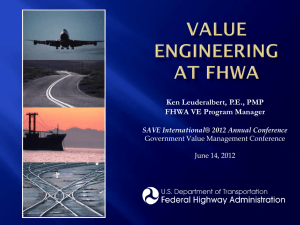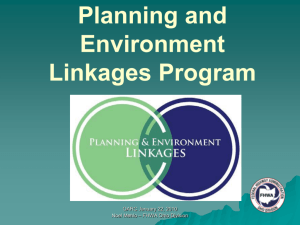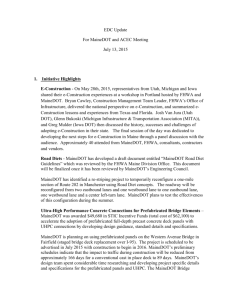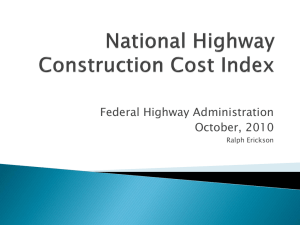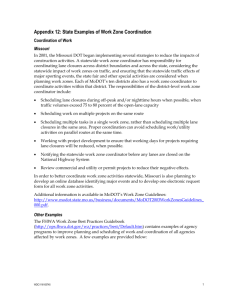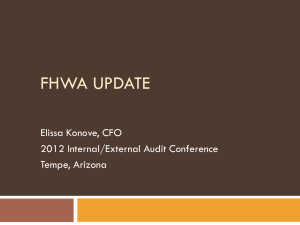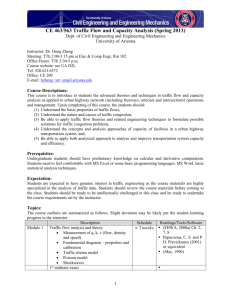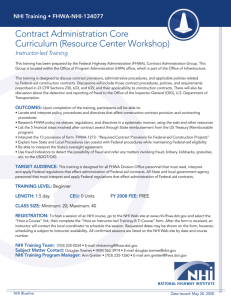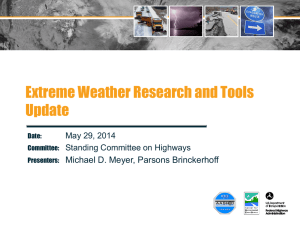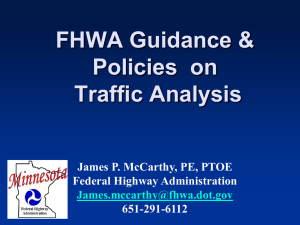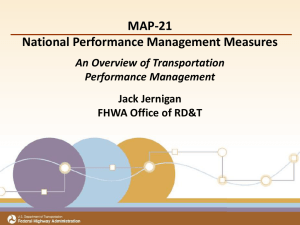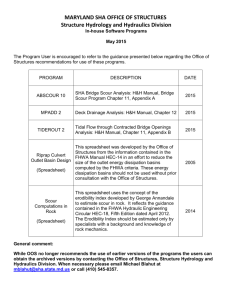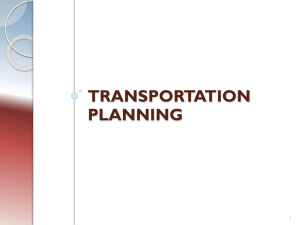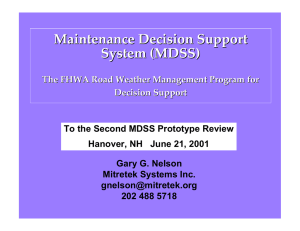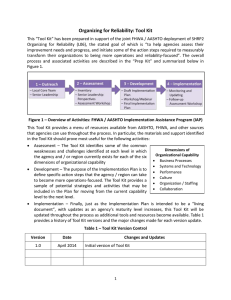Nicol – Promoting Innovation: Proprietary Products
advertisement
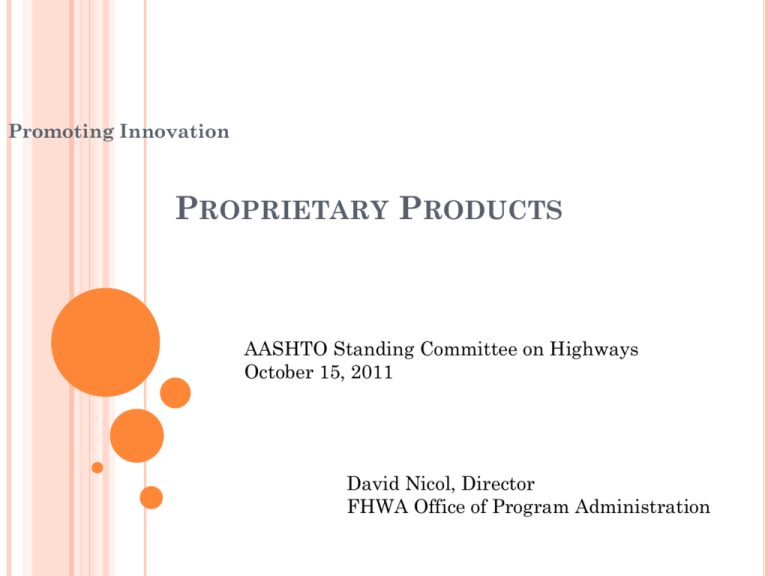
Promoting Innovation PROPRIETARY PRODUCTS AASHTO Standing Committee on Highways October 15, 2011 David Nicol, Director FHWA Office of Program Administration PROPRIETARY PRODUCTS PERCEPTION FHWA promotes the development of innovative products, sometimes even providing seed money, but …. Once developed, we prohibit the products use on Federal-aid projects. AASHTO DOCKET COMMENTS (APRIL 1, 2011) USDOT DOCKET NO. 2011-0025 Current Federal laws and regulations: “. . . impose broad restrictions on the states’ ability to utilize proprietary methods, materials, and equipment on federal-aid projects and, as a result, limit the development of new products and discourage innovation.” “The State DOTs’ hands are tied when trying to use these products because of “low-bid” requirements.” “Currently, a new proprietary product that is developed and placed on the market cannot easily be used in highway construction until a “comparable” product is produced.” “The inability of government agencies to specify a particular product which currently has no “equal” limits innovation by essentially “lowering the bar” for all products in order to artificially produce competition within the market.” 23 CFR 635.411 Patented items allowed when: Bid competitively with equally suitable unpatented items State certifies: Essential for synchronization No equally suitable alternative exists Used for research FHWA makes Public Interest Finding even though other suitable alternatives exist IMPLEMENTATION ISSUES Inconsistent interpretation among Divisions Non-uniform understanding of certification vs. public interest finding Non-uniform understanding of FHWA approval requirements No central repository of approved proprietary products UPDATED GUIDANCE Clarifies differences between Certifications and Public Interest Findings Clarifies approval authorities for States and FHWA Clarifies experimental use when participating in certain programs Provides transparency CERTIFICATIONS VS. PIFS Certification No suitable alternative Essential for synchronization Public Interest Finding Other alternatives exist APPROVAL REQUIREMENTS Certifications Certified by State DOT No FHWA approval required Approval cannot be delegated to local agencies Public Interest Findings FHWA Division Administrator approval required May be delegated to State DOT via Stewardship Agreement Cannot be redelegated to local agencies. CERTIFICATIONS Certification must include: Statement by the appropriate State official certifying that the proprietary product is: Essential for synchronization, or That no equally suitable alternative exists Certification also should include documentation supporting the determination. Unique need being addressed Why other products cannot meet the need PUBLIC INTEREST FINDINGS Public Interest Finding includes: Request from State DOT, including supporting information Approval by FHWA, considering: Evaluation of equally acceptable products Benefit to public Additional costs, if any Duration and extent of approval Approval may be delegated to State DOT EXPERIMENTAL USE Clarifies that products which have been approved under special funding/evaluation programs do not need additional certifications or approvals under 23 CFR 635.411 for the use of patented or proprietary products. Examples: Highways for Life Innovative Bridge Research and Deployment Program Innovative Pavement Research and Deployment Program TRANSPARENCY FHWA has posted all “Public Interest Findings” on its website Sortable by: State Basis of approval Product name Product type Extent (project, statewide) Approval date Expiration Date Many of these “Public Interest Findings” could have/should have been Certifications FHWA APPROVALS OF PATENTED AND PROPRIETARY PRODUCTS HTTP://WWW.FHWA.DOT.GOV/CONSTRUCTION/CONTRACTS/PNPAPPROVALS/INDEX.CFM FHWA HEADQUARTERS CONTACT: JOHN HUYER, 202-366-1937 TRANSPARENCY Where will certifications be posted? FHWA website Central location Requires submittal to FHWA State DOT websites No central location No submittal to FHWA AASHTO website (APEL) Central location No submittal to FHWA Post all, or just “no suitable alternative”? QUESTIONS AND COMMENTS
